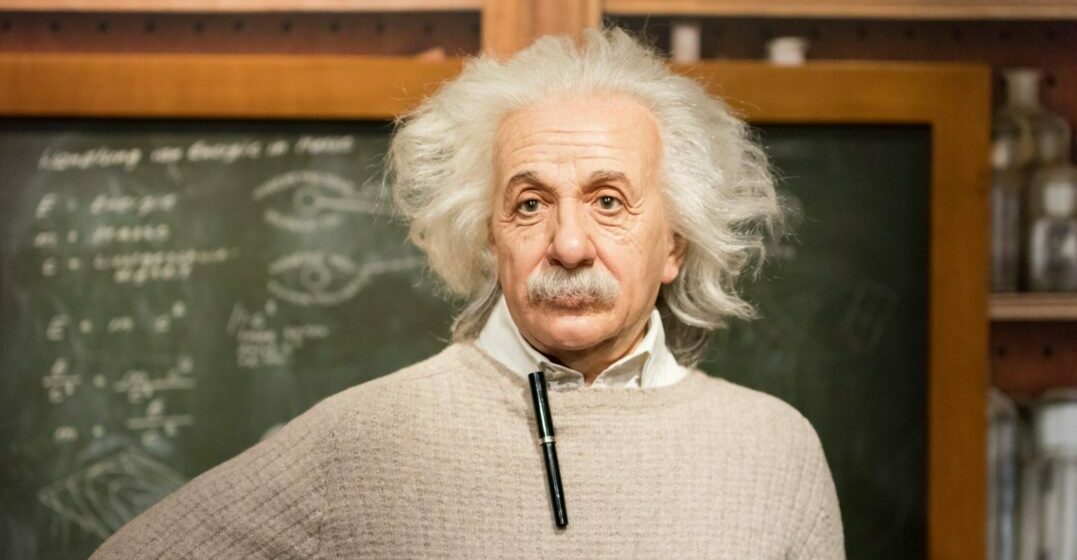7 German scientists you need to know

You’re probably aware of Albert Einstein, but how many other German scientists do you know? Einstein was one of several prominent German physicists who worked in the early 20th century but Germany also produced scientists in other fields who are recognized for their work around the world.
From naturalists to engineers and the 16th century to the 21st, here’s our list of seven German scientists you need to know.
- Albert Einstein
- Amalie Emmy Noether
- Karl Benz
- Max Born
- Maria Goeppert-Mayer
- Alexander von Humboldt
- Johannes Kepler
Learn languages at your pace
1. Albert Einstein
Physicist Albert Einstein is perhaps the most famous German scientist and is often named as one of the greatest physicists in history. He is widely known for developing the theory of relativity and for coming up with the world’s best-known equation, E = mc2. For many people, the word Einstein is synonymous with genius.
He was born in Ulm in 1879, spent some time in Switzerland as a young man and was living in Berlin when he was awarded the Nobel Prize in Physics in 1921. Einstein, who was of Jewish origin, emigrated to the United States when the Nazis came to power in Germany and he continued his work there.
2. Amalie Emmy Noether
Noether was a contemporary of Albert Einstein and, though many of us might not have heard of her, Einstein certainly had. She was described by him as a “significant creative mathematical genius”. In physics, Noether’s theorem explains the relationship between symmetries and conservation laws and Noether also worked out theories of rings, fields and algebras.
She was born in Erlangen and she worked at the University of Göttingen between 1915 and 1933. Like Einstein, Noether was Jewish and she moved to the United States in 1933 to work at Bryn Mawr College and Princeton.
3. Karl Benz
When talking about German scientists and their inventions, Karl Benz will often come up. Benz was an automotive engineer who, in 1885, created the world’s first automobile fueled by gas – aka, the first automobile. By 1900, his company Benz & Cie was the world’s biggest automobile producer.
It’s important not to forget Karl’s wife, Bertha, who had a hand in creating the automobile too. In 1888, Bertha took the car for a 104-kilometer drive and, over the course of her trip, managed to invent brake pads and afterward, convinced her husband that a third gear was needed for climbing hills. Two very handy additions!
Learn languages at your pace
4. Max Born
Max Born was a German physicist who had a crucial role in the development of quantum mechanics. He did a lot of his most important work while he was a professor at the University of Göttingen in the 1920s and he finally won the Nobel Prize in Physics in 1954 after being nominated many times by fellow scientists.
Max Born was born in Breslau in 1882 and eventually left Göttingen in 1933 when the Nazis took over. He moved to the UK, where he worked at the University of Cambridge and the University of Edinburgh.
5. Maria Goeppert-Mayer
Continuing the theme of German physicists, Maria Goeppert-Mayer was one of the top German scientists in the 20th century. She was born in Kattowitz in the German Empire in 1906 but spent a lot of her life in Göttingen, attending university there from 1924. Yes, Göttingen again; the university there had a real heyday in the 1920s.
Goeppert-Mayer wrote a doctoral thesis on theoretical physics and continued her work in the US after getting married. She won the Nobel Prize in Physics in 1963 for her mathematical model for the structure of nuclear shells.
6. Alexander von Humboldt
We’re going back in time a little now to the naturalist and geographer Alexander von Humboldt, who was born in Berlin in 1769. Humboldt’s most famous work was the book “Kosmos”, which was based on his idea of the unity of nature – that all aspects of the planet are connected. This was revolutionary in Humboldt’s day and the book was an international bestseller.
Humboldt was also an avid traveler and between 1799 and 1804, he spent time in South America, Mexico and Cuba. While there, he discovered the location of the magnetic equator and gathered a lot of plant specimens. Humboldt was one of the first people to explore the relationship between deforestation and climate change and an early proponent of the idea that the continents had once been one landmass.
7. Johannes Kepler
The final German scientist on our list is Johannes Kepler, who was born in Weil der Stadt in 1571. Kepler was primarily an astronomer and he was the first person to correctly explain planetary motion, expanding on fellow astronomer Nicolaus Copernicus’s discovery of a sun-centered universe.
He also did a lot of work on optics and was the first person to create an eyeglass for nearsightedness and farsightedness and to explain how a telescope worked. NASA’s famous Kepler space telescope was named after him.
Seven important German scientists
Germany’s contribution to the world of science is extensive and has ranged from the botanical and cartographical worlds to the fields of physics and the automotive industry, where it is still a world-leader While we often know the names of the men in these areas of science, women like Noether and Goeppert-Mayer were significant figures too. One reason to learn German might be to get to know more about these leaders in their native language.













